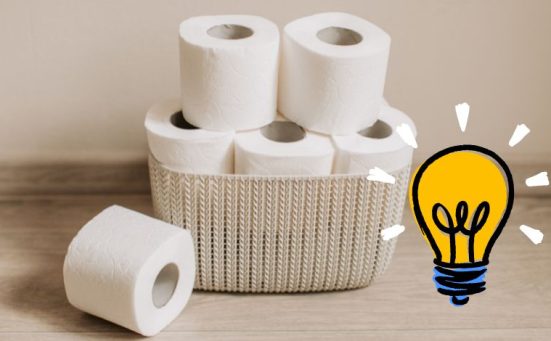
What Causes Black Mould On Washing Machines? (how to remove it)
Black mould not only looks unsightly, it can be hazardous to health too. According to the NHS [1], black mould can cause or exacerbate respiratory infections, asthma and allergies. So it’s a good idea to remove black mould from your washing machine as soon as you can.
What Causes Black Mould?
One of the main causes of black mould is moisture. Mould is a fungus which spreads via airborne spores which germinate in areas where moisture is present. It thrives in cool, damp areas with little to no ventilation. Now we have an idea of what we’re dealing with, we have a better idea on how to deal with it.
Cool wet conditions are perfect for mould spores to spread and the rubber door seal of your washing machine is the perfect place for them to grow.
Why Does Mould Accumulate On Washing Machine Door Seals?
One of the main causes of mould forming on washing machine door seals, is the ever growing trend of using cool wash programs. Most people nowadays choose the 40 degree wash program with many preferring the 30 degree program. Sure, these lower temperature wash programs save energy, but they could be detrimental to our health.
A combination of cool wash programs and trapped moisture makes the perfect breeding ground for mould and bacteria. The area behind the door seal is the ideal place for these conditions to be maintained. In fact, if you were to run your hand around the back of the rubber door seal on your washing machine, you will likely feel that black sludge which is indicative of mould growth.
Structural Integrity
The growth of black mould is not only a problem for our health, it is also a cause for concern with the door seal on your washing machine. Washing machine door seals are made from a porous rubber which over time gets full of the mildew caused by the mould spores. In many cases, it is impossible to remove the mould and the rubber starts to disintegrate and will need to be replaced.
Colour Safe Detergents
We now have the choice when it comes to washing detergents between those which are colour safe and those with bleaching agents. Many of us choose the colour safe option. This adds to the problem because the detergents with bleaching agents went some way to controlling the mould spores.
Mould spores are responsible for many allergies and other health conditions
Problems can arise when those mould and mildew spores transfer from the washing machine and onto the clothes. This is when skin allergies and asthma can appear. Which is why it is vitally important to remove black mould spores as soon as they become noticeable.
How To Remove Mould From Washing Machines

Now we have an idea of the problem, let’s look at how to remove the mould from the machine. The answer lies in the anti-mould power of bleach.
- Disconnect the power supply
Remove the plug or switch off the wall socket. - Ensure the machine is empty
Remove any clothes etc from the drum of the washing machine. - Ensure adequate ventilation
Open any windows in the room to allow the strong fumes from the bleach to leave the room and ensure that you remain safe. - Put on a pair of cleaning gloves
Whenever using bleach or any other cleaning agents, it is always best to protect your hands from harmful chemicals. - Mix bleach and water
Fill a bucket with water and add 1 cup of bleach - Clean the door seal
Using a soft cloth soaked in the bleach and water solution, ensure all of the door seal is coated in the solution. Pay particular attention to the areas behind the fold of the rubber seal. Treat these areas with care as they can be quite easily torn if treated too roughly. - Allow the mixture time to soak in
Once you have completely soaked the whole of the door seal in the solution, allow to stand for 10 to 15 minutes with the door open. - Wipe all of the solution away
Using a clean dry cloth, wipe away all of the remaining bleach solution. Exert some pressure to remove all of the remaining mould spores and stains. - Leave the machine’s door open
Once you have finished wiping away all of the residue, leave the washing machine’s door open overnight, or for at least a few hours. - Run a hot wash
The following morning, run a hot wash program on your machine to remove any bleach or mould spores you might have missed.
Removing Mould Spores From The Detergent Dispenser
The detergent dispenser is another area where mould spores thrive. It is cold and wet which is ideal for the mould and mildew spores to grow. The dispenser drawer can be removed from the machine for easy cleaning. Once the drawer has been removed, plunge it into the bucket containing the bleach and water solution used to clean the door seal and allow it to soak for around 15 minutes.
Rinse the drawer under the tap to ensure all of the bleach solution has been removed and then replace the drawer into the machine.
Are There Any Alternatives To Bleach?
If you don’t wish to use bleach as your main cleaning agent in the fight against black mould, there are alternatives you could try.
Bicarbonate Of Soda And White Vinegar
Many people swear by this combination for removing black mould from washing machines. Place 2 cups of bicarbonate of soda directly into the washing machine’s drum, then run a long, hot wash. Then add 2 cupfuls of white vinegar to the detergent drawer and run another hot wash. At the end of the second wash the black mould spores should easily rub off with a clean cloth.
Other Cleaning Agents
Other cleaning agents include;
- Hydrogen peroxide and lemon juice (½ cup peroxide, ¼ cup lemon juice and 2 cups water)
- Vinegar and water
- Vinegar and lemon juice
- Branded mould remover
Manufacturers Advice
Most washing machine manufacturers recommend giving your washing machine a service wash every month. This is basically a hot wash without any laundry, into which you add a cup of bleach or any detergent with some form of added bleaching agent.
Ways To Prevent Black Mould From Forming In Your Washing Machine
- Once you have successfully removed all of the mould and mildew from your washing machine, running a service wash every month should help to reduce the number of spores present.
- You should also always rub the door seal with a dry cloth after every wash and never leave wet clothes in the machine once the program has finished.
- Leave the washing machine door open after use to allow the interior to dry out completely and help to prevent mould spores from forming.
- Always use the correct detergent in the correct quantity for your machine. Using an incorrect detergent type or using too much detergent can cause excess soap suds which can cause mould to grow.
- If the utility room is damp, use a dehumidifier to remove as much damp air as possible.
Frequently Asked Questions
Black mould is caused by air borne spores of the stachybotrys chartarum genus which thrive in cold, moist places.
Bleach kills all strains of black mould that it comes into contact with permanently.
Whilst black mould is not toxic to humans, it can cause allergies, including skin allergies and asthma.
Heat does prevent mould which thrives in cold moist conditions.
Also, follow us on Pinterest ...



